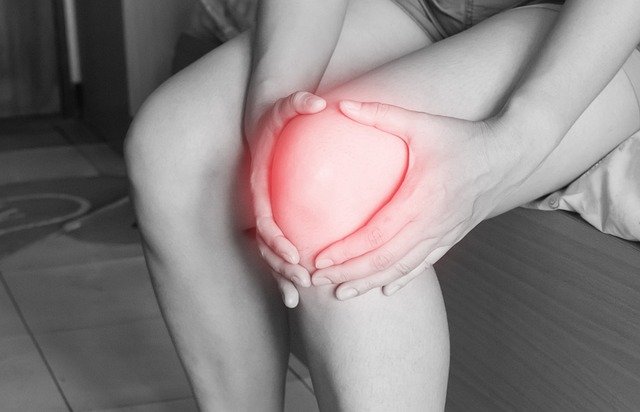Early Detection of Psoriatic Arthritis: Key Symptoms and Effective Management
Living with psoriatic arthritis can be challenging, but recognizing it early can make a real difference. This condition affects both joints and skin, often starting subtly with mild stiffness, fatigue, or skin changes. Understanding these early signs is crucial, as timely management—through gentle lifestyle adjustments, supportive treatments, and practical strategies—can help maintain mobility, reduce discomfort, and improve daily life. In this guide, we’ll explore the key symptoms to watch for and effective ways to manage them, empowering you to take control and stay active.

What is psoriatic arthritis?
Psoriatic arthritis is a form of inflammatory arthritis that occurs in approximately 30% of people with psoriasis. It is characterized by joint inflammation, pain, and stiffness, often accompanied by skin and nail changes typical of psoriasis. The condition can affect any joint in the body, but it commonly targets the joints in the fingers and toes, as well as the lower back, wrists, knees, and ankles. Psoriatic arthritis is a chronic condition that can progressively damage joints if left untreated, making early diagnosis and intervention essential for long-term health and mobility.
What are the key symptoms of psoriatic arthritis?
Recognizing the early signs of psoriatic arthritis is crucial for timely diagnosis and treatment. Common symptoms include:
-
Joint pain and stiffness, particularly in the morning or after periods of inactivity
-
Swelling in one or more joints, often in the fingers or toes
-
Changes in nail appearance, such as pitting, separation from the nail bed, or thickening
-
Fatigue and reduced energy levels
-
Tenderness, pain, or swelling where tendons and ligaments attach to bones (enthesitis)
-
Lower back pain and stiffness (spondylitis)
It’s important to note that symptoms can vary from person to person and may come and go in cycles of flares and remissions.
How does psoriatic arthritis affect the hands?
Psoriatic arthritis hands are often one of the most noticeable and troublesome aspects of the condition. The impact on the hands can include:
-
Dactylitis: Also known as “sausage digits,” this involves swelling of an entire finger or toe, giving it a sausage-like appearance.
-
Nail changes: Pitting, ridging, or separation of the nail from the nail bed (onycholysis) are common in psoriatic arthritis.
-
Joint deformities: Over time, untreated psoriatic arthritis can lead to joint damage and deformities in the fingers.
-
Reduced dexterity: Pain, swelling, and stiffness can make it difficult to perform fine motor tasks.
-
Skin plaques: In addition to joint symptoms, some individuals may experience psoriasis plaques on their hands.
Early detection and treatment of psoriatic arthritis in the hands can help prevent long-term damage and maintain hand function.
What are effective management strategies for psoriatic arthritis?
Managing psoriatic arthritis involves a multifaceted approach aimed at reducing inflammation, alleviating pain, and preventing joint damage. Effective strategies include:
-
Medications: Nonsteroidal anti-inflammatory drugs (NSAIDs), disease-modifying antirheumatic drugs (DMARDs), and biologic agents can help control inflammation and slow disease progression.
-
Physical therapy: Targeted exercises can help maintain joint flexibility, strengthen supporting muscles, and improve overall function.
-
Occupational therapy: This can provide strategies and tools to protect joints during daily activities and maintain independence.
-
Lifestyle modifications: Regular exercise, maintaining a healthy weight, and avoiding smoking can positively impact disease management.
-
Stress reduction: Techniques such as meditation, yoga, or counseling can help manage stress, which may trigger flare-ups.
-
Joint protection: Using assistive devices and making ergonomic adjustments can help reduce strain on affected joints.
-
Dietary changes: While no specific diet has been proven to cure psoriatic arthritis, some individuals may benefit from an anti-inflammatory diet rich in fruits, vegetables, and omega-3 fatty acids.
Treatment options for psoriatic arthritis
| Treatment Type | Examples | Key Benefits |
|---|---|---|
| NSAIDs | Ibuprofen, Naproxen | Reduces pain and inflammation |
| DMARDs | Methotrexate, Sulfasalazine | Slows disease progression |
| Biologics | Adalimumab, Etanercept | Targets specific inflammatory pathways |
| JAK inhibitors | Tofacitinib, Upadacitinib | Modulates immune response |
| Topical treatments | Corticosteroid creams | Manages skin symptoms |
Prices, rates, or cost estimates mentioned in this article are based on the latest available information but may change over time. Independent research is advised before making financial decisions.
Effective management of psoriatic arthritis often requires a combination of these treatments, tailored to each individual’s specific symptoms and disease severity. Regular follow-ups with a rheumatologist are essential to monitor disease progression and adjust treatment plans as needed.
In conclusion, early detection and proactive management of psoriatic arthritis are crucial for maintaining joint health and overall well-being. By recognizing key symptoms, particularly in the hands, and implementing a comprehensive treatment strategy, individuals with psoriatic arthritis can effectively manage their condition and improve their quality of life. Regular communication with healthcare providers and adherence to treatment plans are essential components of successful long-term management.
This article is for informational purposes only and should not be considered medical advice. Please consult a qualified healthcare professional for personalized guidance and treatment.




